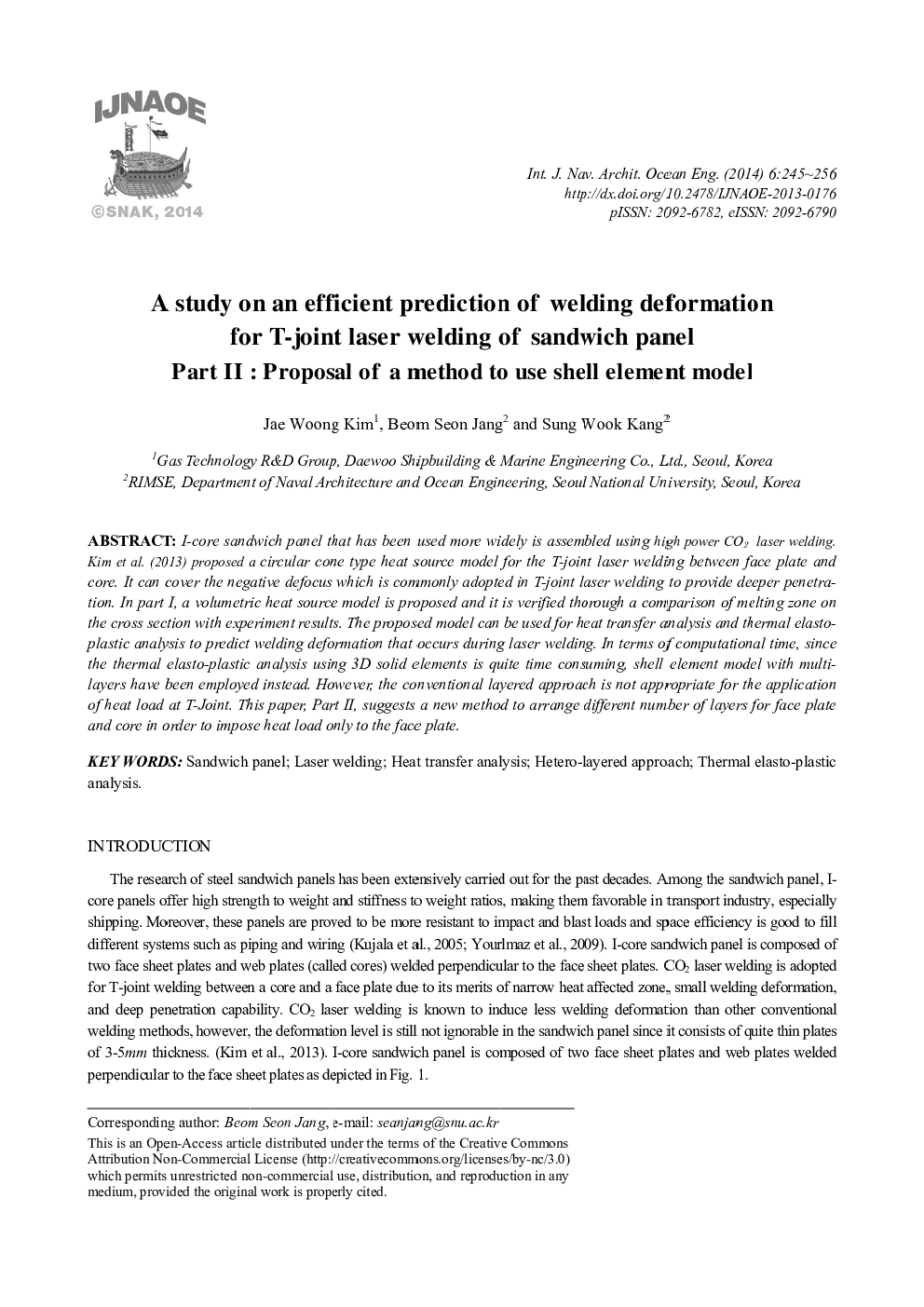| Article ID | Journal | Published Year | Pages | File Type |
|---|---|---|---|---|
| 4451686 | International Journal of Naval Architecture and Ocean Engineering | 2014 | 12 Pages |
ABSTRACTI-core sandwich panel that has been used more widely is assembled using high power CO2 laser welding. Kim et al. (2013) proposed a circular cone type heat source model for the T-joint laser welding between face plate and core. It can cover the negative defocus which is commonly adopted in T-joint laser welding to provide deeper penetration. In part I, a volumetric heat source model is proposed and it is verified thorough a comparison of melting zone on the cross section with experiment results. The proposed model can be used for heat transfer analysis and thermal elasto-plastic analysis to predict welding deformation that occurs during laser welding. In terms of computational time, since the thermal elasto-plastic analysis using 3D solid elements is quite time consuming, shell element model with multi-layers have been employed instead. However, the conventional layered approach is not appropriate for the application of heat load at T-Joint. This paper, Part II, suggests a new method to arrange different number of layers for face plate and core in order to impose heat load only to the face plate.
